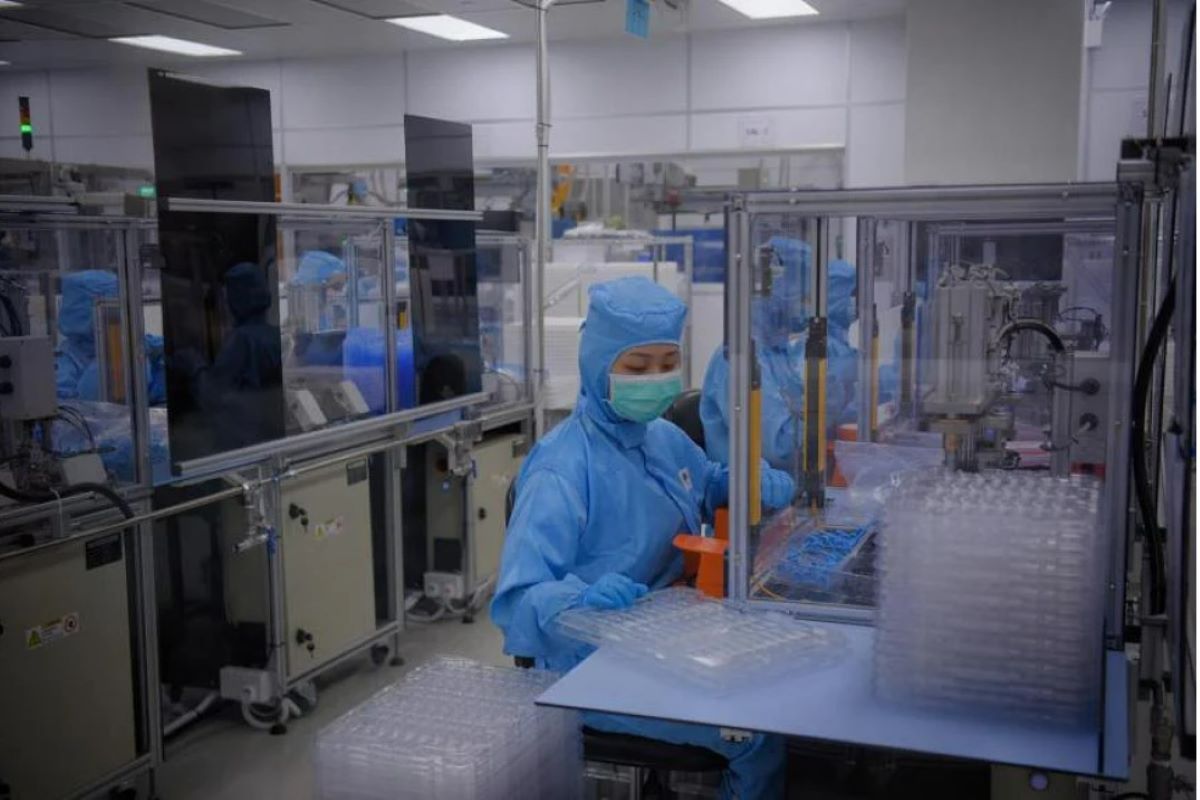Private sector activity eases to 14-month low of 57.9 in Jan: Survey
The HSBC India Composite PMI Flash reading, dipped below the 58 mark for the first time in 13 months.
Analysts said weak manufacturing would have dampened economic growth in the third quarter, raising the spectre of a technical recession, which is defined as two straight quarters of negative growth.

The manufacturing decline follows a second month of contraction in the electronics sector. PHOTO: ST FILE
A key gauge of manufacturing activity in export-driven Singapore slumped in September for the first time in more than two years as soaring inflation and interest rate hikes weigh on consumer demand worldwide.
Analysts said weak manufacturing would have dampened economic growth in the third quarter, raising the spectre of a technical recession, which is defined as two straight quarters of negative growth.
Advertisement
The Singapore purchasing managers’ index (PMI) dropped 0.1 point from August to 49.9 points in September, snapping the 26-month run of expansion.
Advertisement
A PMI reading above 50 indicates expansion, while one below signals contraction. The index is compiled and published by the Singapore Institute of Purchasing and Materials Management (SIPMM).
The manufacturing decline follows a second month of contraction in the electronics sector, which represents 40 per cent of Singapore’s industrial output.
The electronics PMI recorded a drop of 0.2 point from the prior month, shrinking to 49.4 points in September. The sector’s PMI slipped into contraction in August for the first time after 24 months of expansion.
The data underscores the retreat of the electronics sector, whose strong performance in the past two years pulled the economy out of its worst recession in 2020 and then led it in 2021 to its fastest expansion in more than a decade.
This year, however, surging prices have gradually raised business costs and eroded consumers’ purchasing power worldwide.
Aggressive interest rate hikes by major central banks, aimed at putting a lid on decades-high inflation, is raising borrowing costs and further weighing down consumption.
Ms Sophia Poh, vice-president for industry engagement and development at SIPMM, said the continued weakness in the electronics sector has finally caught up with overall manufacturing.
“Global markets are still grappling with the macroeconomic risks of high inflation and tightening,” she said, referring to the interest rate hikes.
The drop in manufacturing PMI reading was attributed to contractions in new orders, output and inventories, the SIPMM report showed.
Meanwhile, both finished goods and imports posted faster contraction rates. The order backlog also reverted to a contraction after posting 26 months of continuous expansion.
Employment and supplier deliveries, however, recorded faster expansion rates whereas the input prices posted a slower rate of expansion.
For the electronics sector, the latest reading was the result of contraction in new orders, new exports, factory output, and employment which reverted to a contraction after posting 22 months of continuous expansion.
Finished goods and imports also contracted, while input prices and order backlogs increased at a slower rate.
Inventories in the sector also posted a slower rate of contraction, whereas supplier deliveries expanded at a faster pace than the previous month.
Ms Selena Ling, chief economist at OCBC Bank, said Singapore is now one of the many Asian economies – such as Taiwan, Malaysia and South Korea – where manufacturing PMIs have turned negative.
“The deflating global electronics momentum, especially in chipmaking, has been gaining speed of late and may continue to weigh on domestic manufacturing growth prospects in the coming months,” she said.
Dr Chua Hak Bin, head of research at Maybank, said the contraction in electronics manufacturing on the back of slumping global demand will depress economic growth.
He said the upcoming third-quarter gross domestic product flash estimate by the Ministry of Trade and Industry in October may show growth shrinking 0.6 per cent on a quarter-on-quarter seasonally adjusted basis, after the 0.2 per cent contraction in the second quarter.
That would imply that the economy is in a technical recession, Dr Chua added.
Advertisement